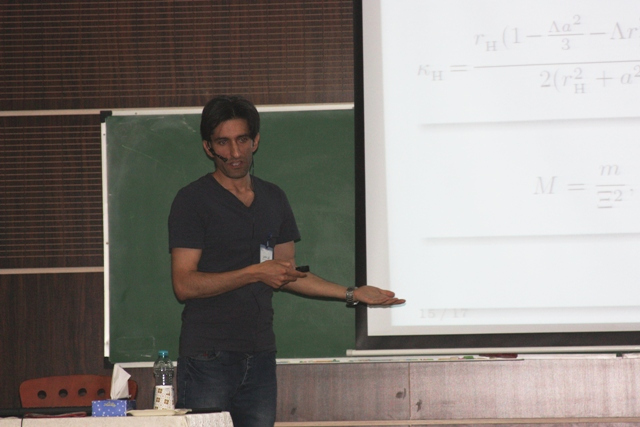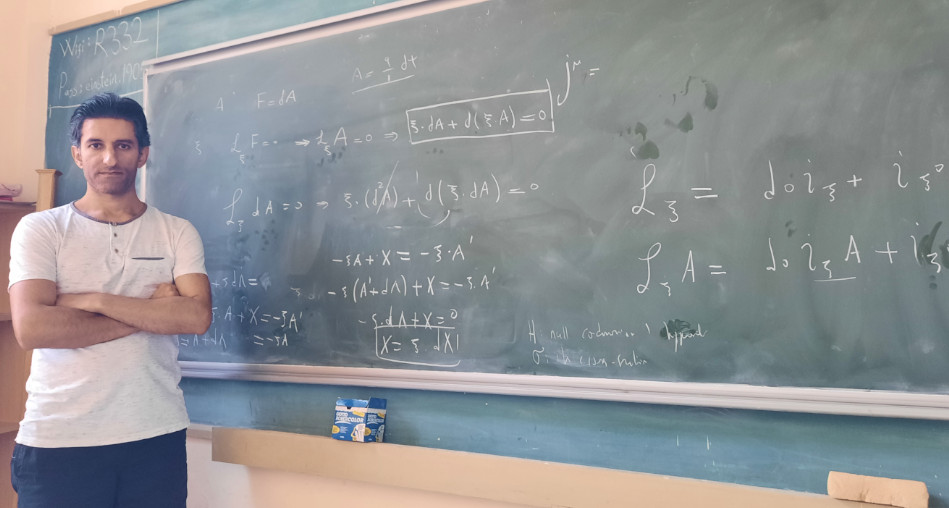More about fundamental physics
There are fundamental questions about nature, both in small and large scales. In small scales, what are
the basic ingredients of matter? What is structure of space-time in such scales? What are the laws governing the
behaviour of matter and space-time in these scales? Is it probabilistic or deterministic?... On the other hand, in large scales we find other fundamental
questions about space-time and matter. How big is the universe? How old is it? What is the universe composed of?
What is the dynamics of its ingredients? What is the dynamics of space-time itself? ...
In small scales, the theory which governs dynamics of matter is called Quantum Field Theory. As the name suggests, it is a
theory which describes dynamics of fields (similar to waves in oceans) not classically, but quantum mechanically. There is a
fundamental field associated with any fundamental particle, resembling the wave-particle duality. Fundamental particles are divided
to two groups: matter and messengers. Fundamental particles of matter are fermions as like as electron, muon, neutrino and quark.
Messengers are bosons as like as photon and gluon.
Dynamics of large scales is dominated by gravity. Gravity is the main force governing the large scales. The theory which describes
this dynamic is called General Relativity. It is older that Quantum Field Theory, and has been introduced by Einstein in 1915.
One can describe dynamics of planets, stars, galaxies, galaxy clusters, and the whole universe using this theory or its generalisations.
Astrophysics and Cosmology refer to different branches of such studies. Astrophysics explains dynamics of stars, while cosmology is the science of describing Universe.
Interestingly, we humans live in a scale in which both of gravity and other forces are simultaneously important. It is enough to think
about an elevator which moves upward with electromagnetism and moves downward with gravity. In our daily regime, gravity and electromagnetism
can impose forces of the same order of magnitude. One can ask about how a quantum field interacts with a classic field which is gravity.
To answer this question, one appropriate context is black hole physics.
Black hole is a prison in space-time as far as we are observers residing outside it. If anything drops in it, can never escape from it.
They are one of the most mysterious objects in the sky.










